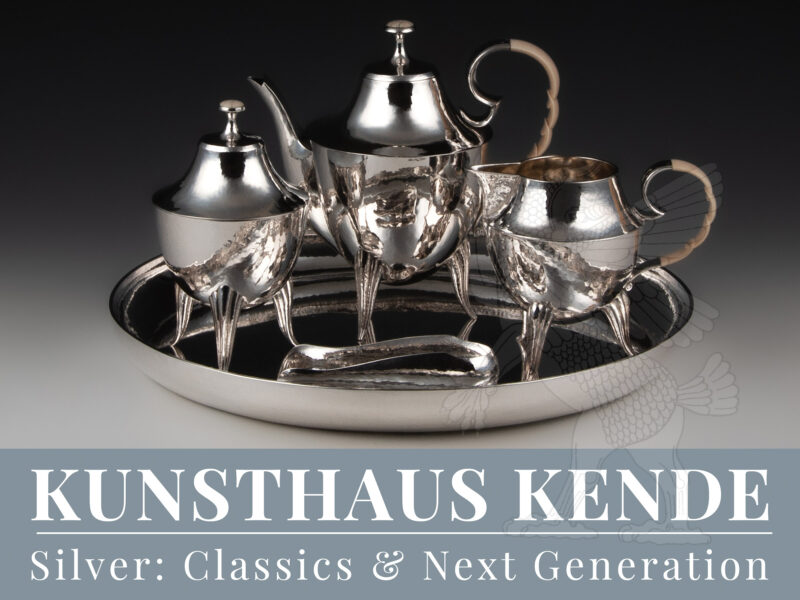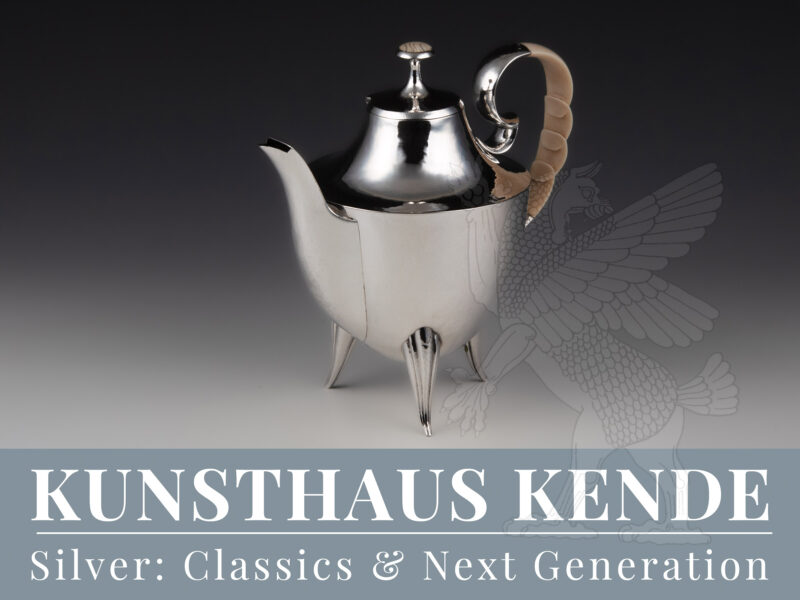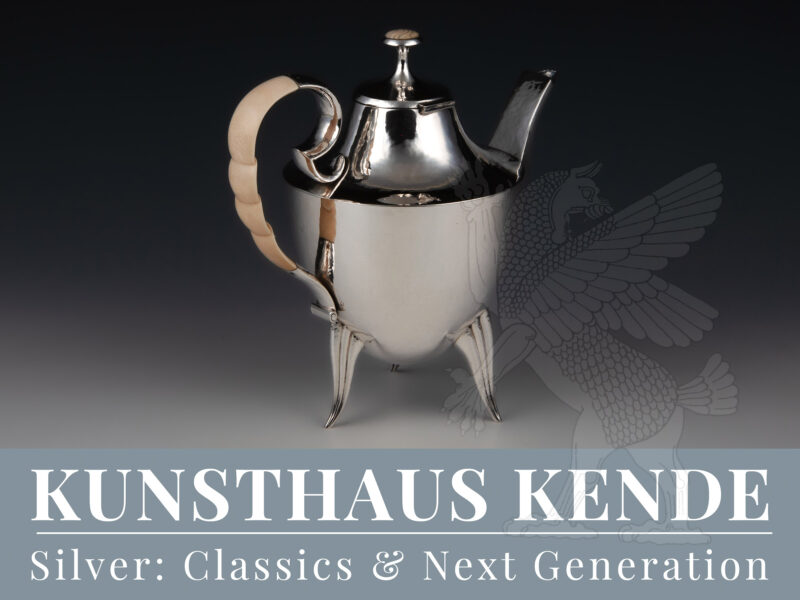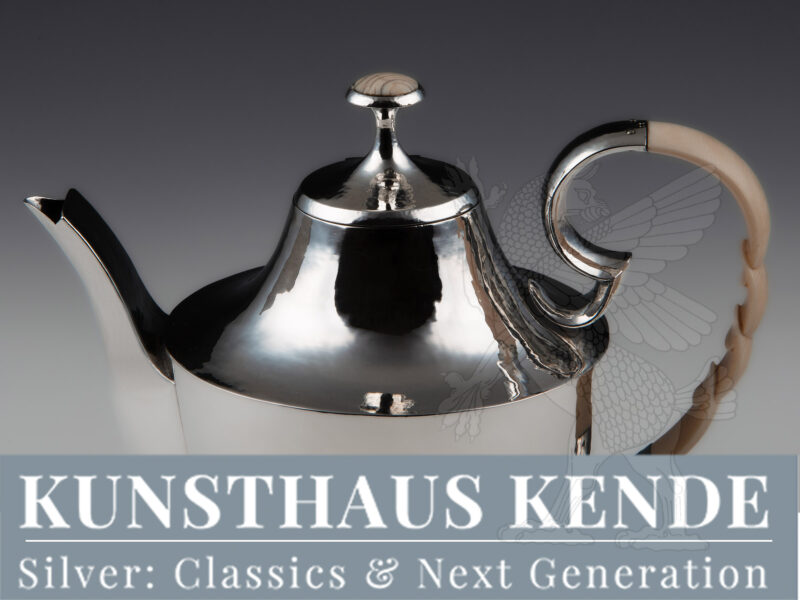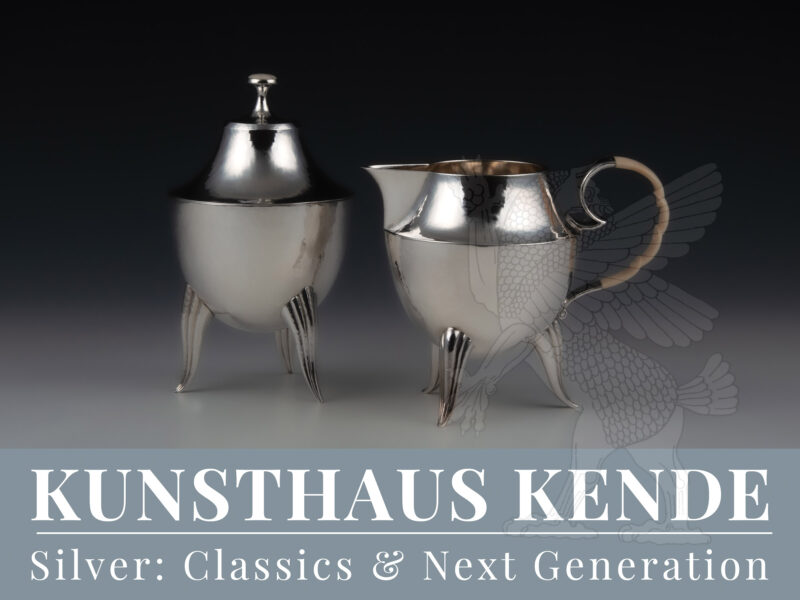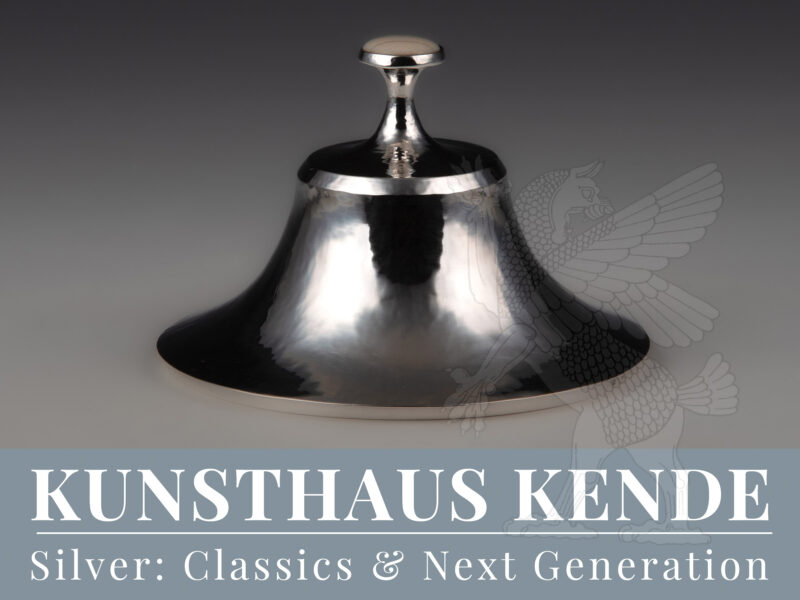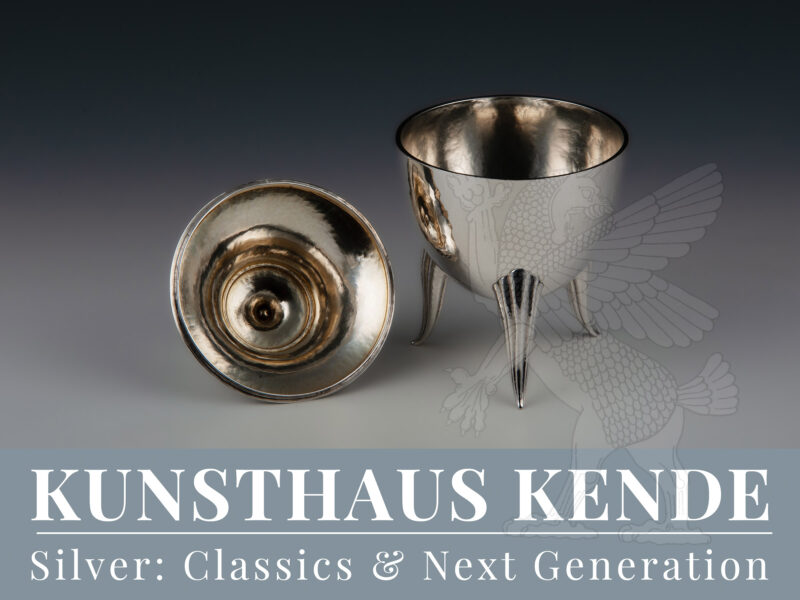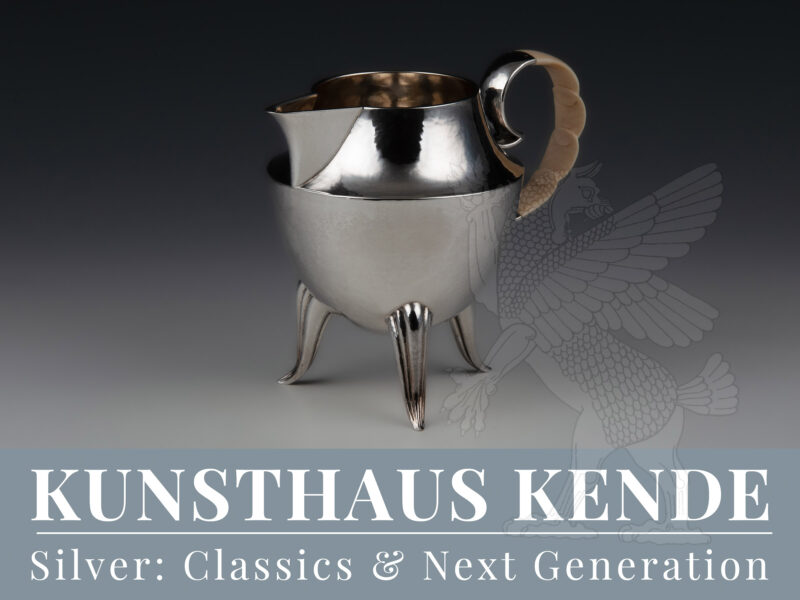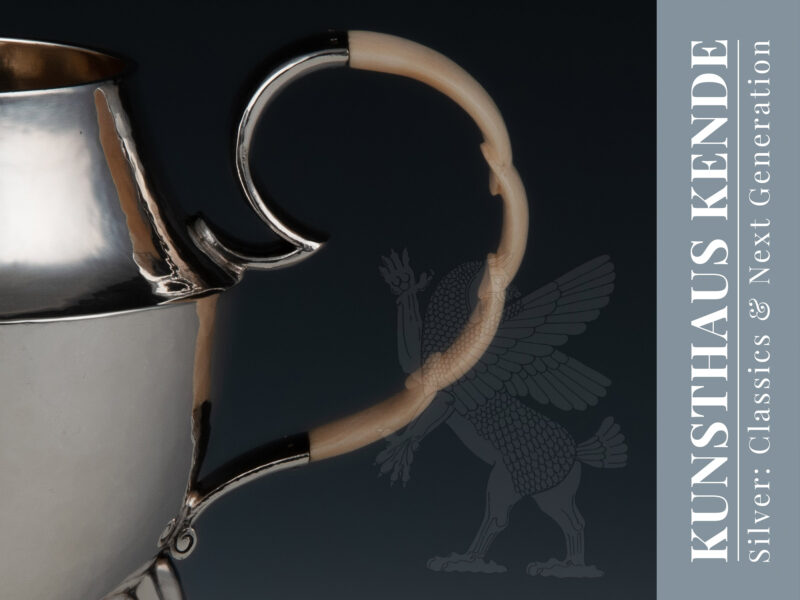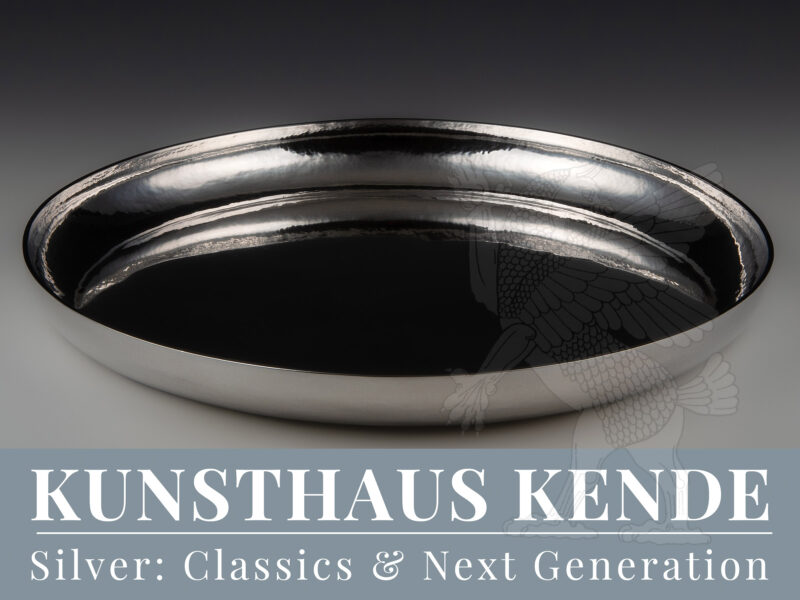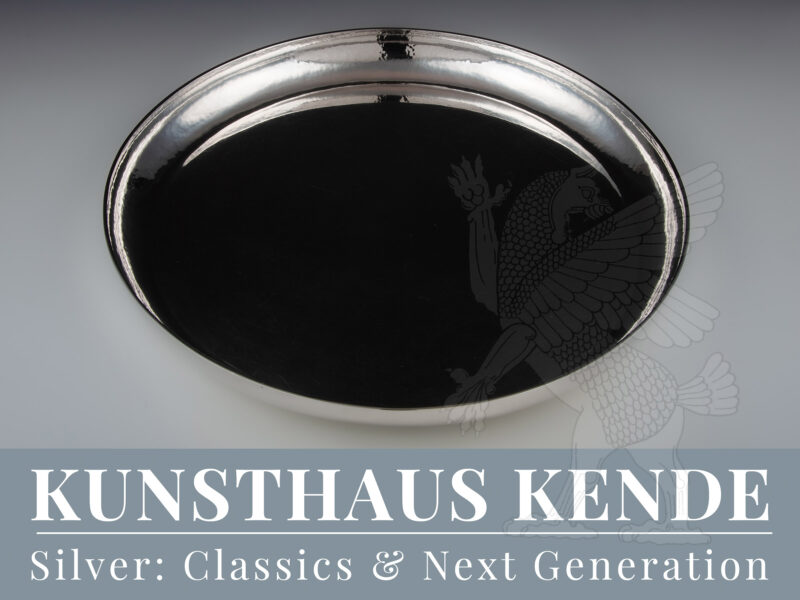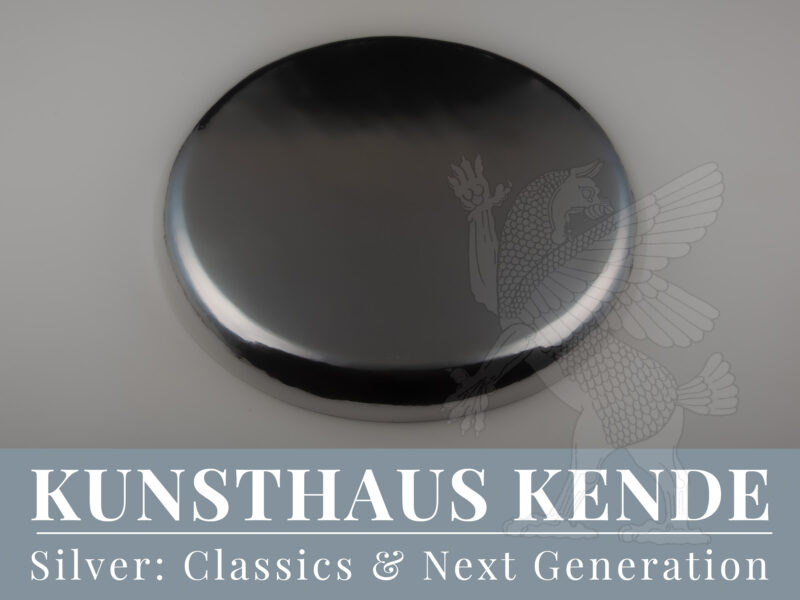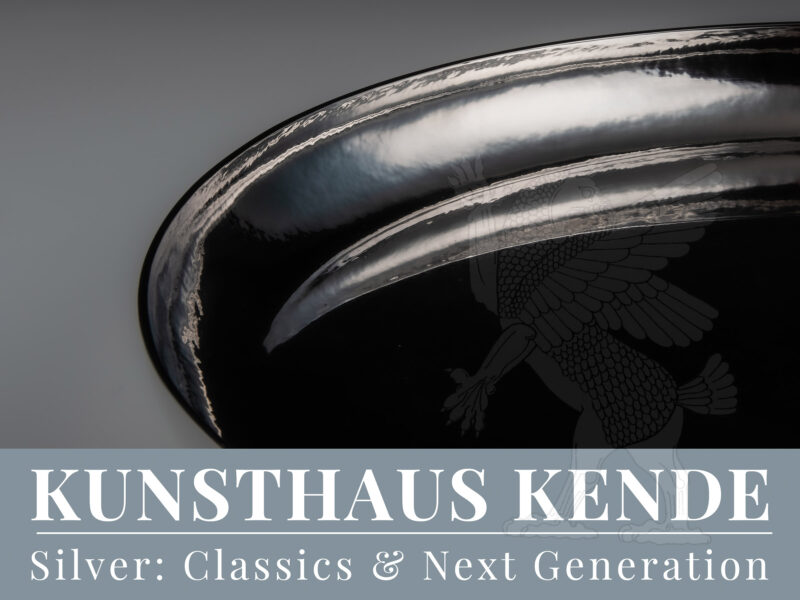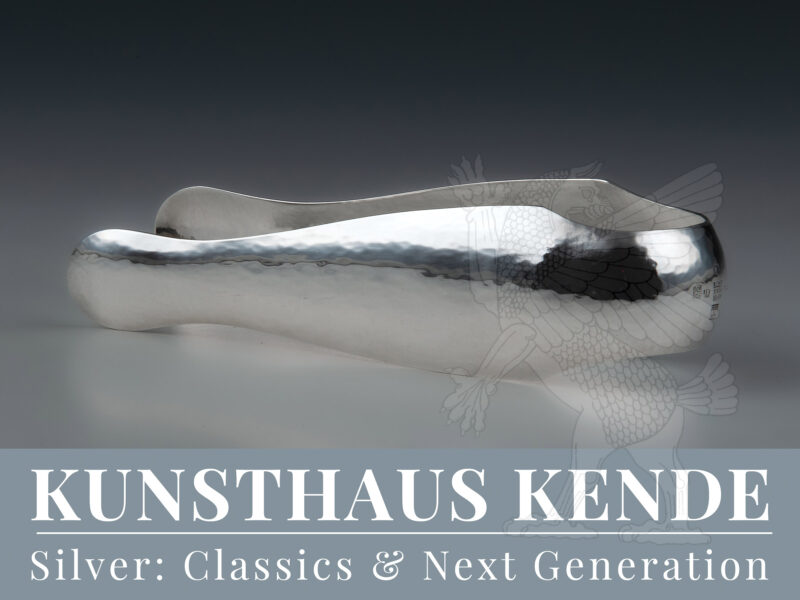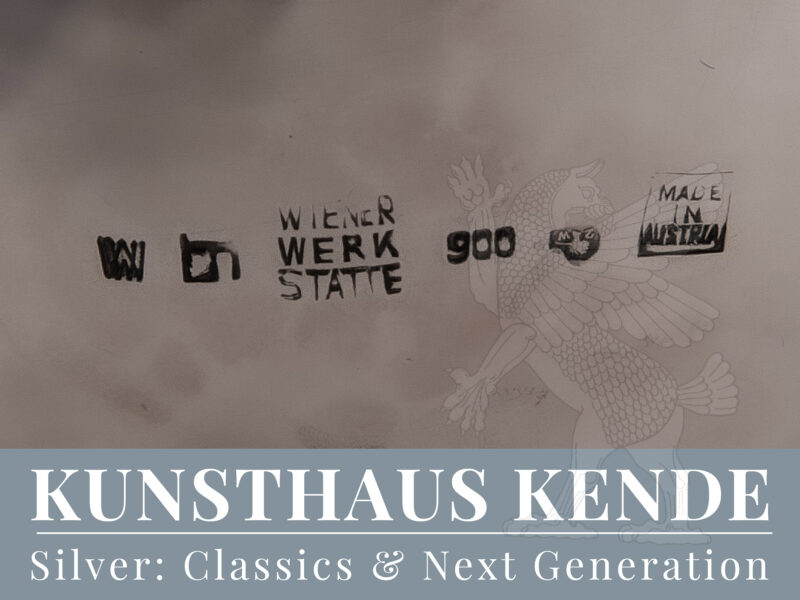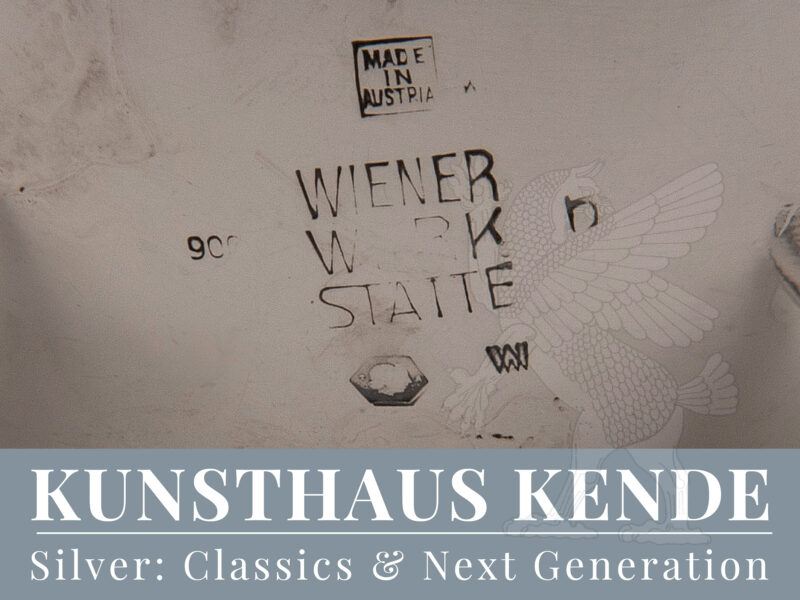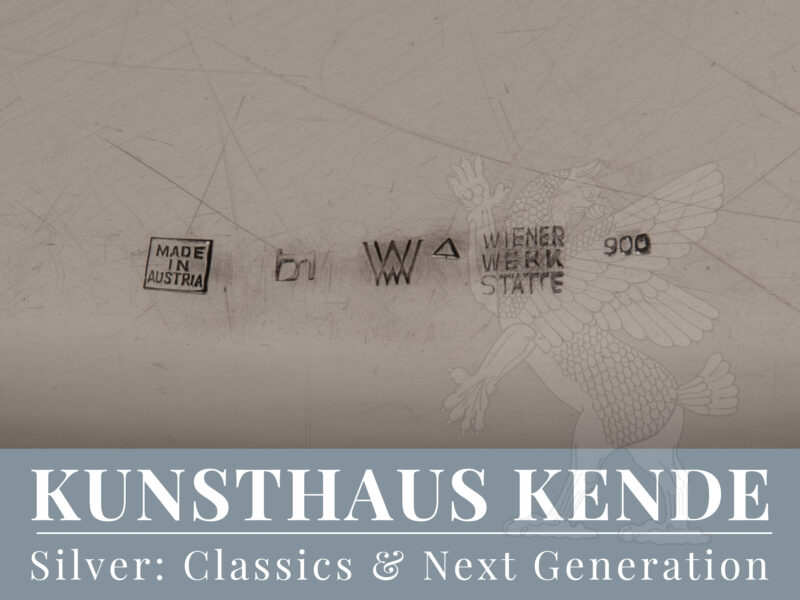Item number: 60189
Rare 900 silver coffee service, Vienna circa 1920,
designed by Josef Hoffmann, executed by the Wiener Werkstätte
The curved bodies chased in the finest martelé and standing on three fluted, subtly curved pointed feet. The lids of the coffee pot and the sugar bowl tapering and finished with a slightly domed, disc-shaped knob. The sculptural handles and the inserts of the knobs are worked in ivory.
Highly exquisite coffee service on a tray with sugar tongs of high quality and great elegance. In particular, details such as the finely hammered lids which emerge into the knobs demonstrate the high manufacturing quality that was typical of the Wiener Werkstätte. The MAK (Museum of Applied Arts) in Vienna owns the contemporary photograph of this work (see here) as well as the design drawings by Josef Hoffmann’s hand (see here and here).
Coffee pot: 20 cm / 7.87″ tall, 12.1 cm / 4.80″ diameter; 463.1 g / 14.88 oz
Sugar bowl: 16.7 cm / 6.57″ tall, 9.7 cm / 3.81″ diameter; 261.1 g / 8.39 oz
Milk jug: 13.0 cm / 5.11″ tall (to the handle), 10.1 cm / 3.97″ diameter; 256.6 g / 8.24 oz
Sugar tongs: 13.6 cm / 5.35″ length; 55.7 g / 1.79 oz
Tray: 36.6 cm / 14.4″ diameter, 3.5 cm / 1.37″ tall; 1005.4 g / 32.32 oz
Josef Hoffmann and silver of the Wiener Werkstätte
Josef Hoffmann (Pirnitz, 1870 – Vienna, 1956) was a highly universal and productive architect and designer, whose relevance in art historical terms can only be compared to names as Henry van de Velde. Josef Hoffmann was a professor at the Vienna School of Applied Arts as well as a founding member of the Wiener Secession and later the Wiener Werkstätte.
The Wiener Werkstätte was an association of visual artists and founded in 1903 by Josef Hoffmann, Koloman Moser and the financier Fritz Waerndorfer. The aim of the company was to integrate art into the everyday life of the public. For this reason (comparable to the artists of the Arts & Crafts Movement) the Wiener Werkstätte devoted itself to the design and production of a comprehensive range of utilitarian and furnishing objects in the spirit of the “Gesamtkunstwerk”. The repertoire ranged from cutlery, bowls and trays, tea services, glass and porcelain to fabrics, wallpaper, curtains, furniture, jewellery and children’s toys. Characteristic of the Wiener Werkstätte’s creations was always high-quality craftsmanship, high aesthetic standards and individuality. Brass, silver-plated metal and silver were used in the production. Works by the Wiener Werkstätte in silver are less common, as these were already highly priced at the time. The company broke with the contemporary ornamental Art Nouveau style and produced groundbreaking modern designs – long before the terminology of “design” emerged.
With its artistically and qualitatively sophisticated products, the company enjoyed such success at times that it operated retail stores in New York, Zurich and Berlin, thus making the “Wiener Werkstätte” a brand of international renown. With the economic crisis of the interwar period and the increasing impoverishment of the middle class, the Wiener Werkstätte also got into economic difficulties, which led to its bankruptcy in 1932.
Alongside Koloman Moser and Dagobert Peche, Josef Hoffmann was the most important designer of the Wiener Werkstätte. As an extremely versatile artist and versatile genius, he produced an impressive number of designs that differed stylistically from one another to such an extent that it is hard to believe that they were created by the same designer.


